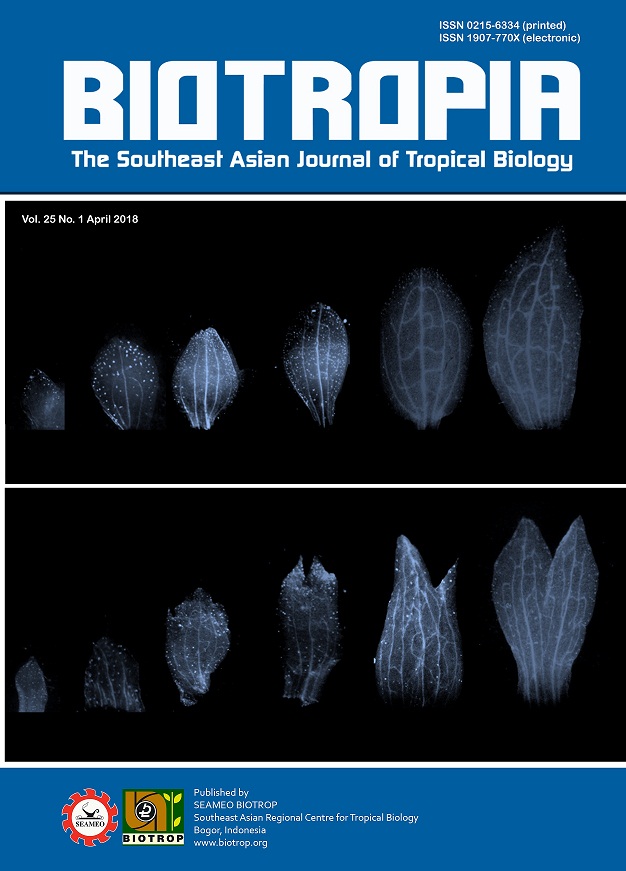
Tags
THE PECULIAR PETIOLE CALLUSES GROWTH OF Amorphophallus titanum (Becc.) Becc. ex Arcang AND ITS IMPLICATIONS FOR Ex situ CONSERVATION EFFORTS
Content Language : English

Amorphophallus titanum is a plant species endemic to Sumatera. Land degradation and illegal capture of hornbills (a distributor of A. titanum seeds) is leading to potential extinction of A. titanum in the wild. In order to conserve the species and save it from extinction, there is an urgent need to develop methods to propagate it both in situ and ex situ. The aim of this research was to discover environmental factors triggering callus growth from petiole cuttings of A. titanum in its natural habitat in Sumatera and to determine the viability of callus pieces as a propagation material. A completely randomized design with a single factor, i.e., callus size, was employed on five callus replicates. Each replicate consisted of four callus samples. The treatments consisted of three callus piece sizes i.e. 0.5 x.0.5 cm2, 1 x 1 cm2, 2 x 2 cm2. For each replicate, the following parameters of growth were assessed: the time of appearance of shoots; the shoot height when the first leaf fully opened; the petiole diameter; the diameter of the leaf lamina; and the number of young shoots. The results of our field observations showed that environmental factors such as temperature, humidity, and soil influence the formation of the callus in the wild. The size of the callus affected the shoot and root growth. The best result was obtained from callus 2 cm², which could produce 2–3 shoots with an average height of 18.8 cm at the time of first fully opened leaf. The collection of petiole calluses of A. titanum that formed in its natural habitat are recommended instead of carrying the tuber.This ex vitro calluses can be used as propagation materials and then it could be planted in the botanic gardens as one of ex situ conservation effort.
Link

This work is licensed under a Creative Commons Attribution-NonCommercial-NoDerivatives 4.0 International License.
